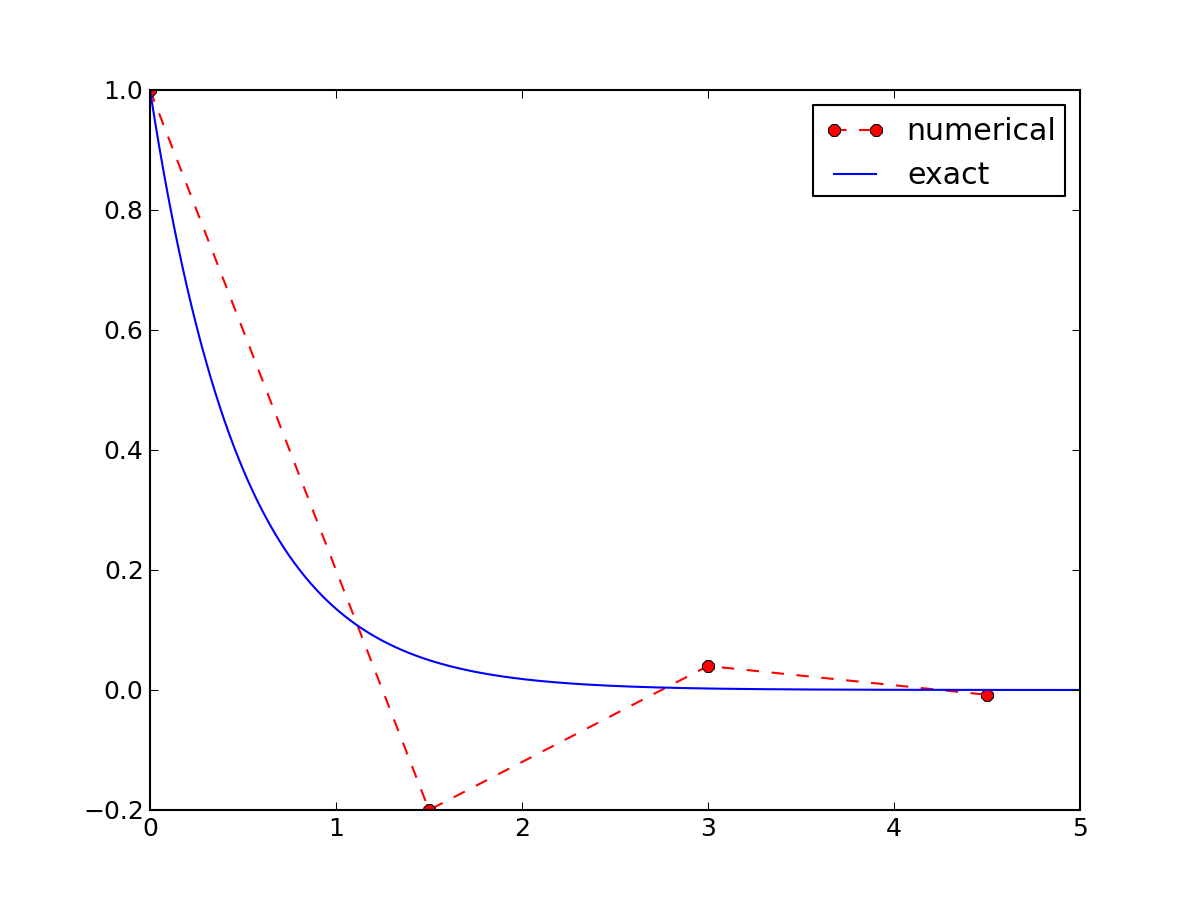On Schemes for Exponential Decay
Sep 24, 2015

Goal
The primary goal of this demo talk is to demonstrate how to write talks with DocOnce and get them rendered in numerous HTML formats.
This version
utilizes reveal slides with the theme uio+simula.
Speaker notes show up by pressing "s" (but you must run reveal locally and some packages installed, see this description).
Problem setting and methods

We aim to solve the (almost) simplest possible differential equation problem
|
Here,
|
|
The ODE problem is solved by a finite difference scheme
- Mesh in time: \( 0= t_0 < t_1 \cdots < t_N=T \)
- Assume constant \( \Delta t = t_{n}-t_{n-1} \)
- \( u^n \): numerical approx to the exact solution at \( t_n \)
The \( \theta \) rule,
$$
u^{n+1} = \frac{1 - (1-\theta) a\Delta t}{1 + \theta a\Delta t}u^n,
\quad n=0,1,\ldots,N-1
$$
contains the Forward Euler (\( \theta=0 \)),
the Backward Euler (\( \theta=1 \)),
and the Crank-Nicolson (\( \theta=0.5 \))
schemes.
The Forward Euler scheme explained
Implementation
def solver(I, a, T, dt, theta):
"""Solve u'=-a*u, u(0)=I, for t in (0,T]; step: dt."""
dt = float(dt) # avoid integer division
N = int(round(T/dt)) # no of time intervals
T = N*dt # adjust T to fit time step dt
u = zeros(N+1) # array of u[n] values
t = linspace(0, T, N+1) # time mesh
u[0] = I # assign initial condition
for n in range(0, N): # n=0,1,...,N-1
u[n+1] = (1 - (1-theta)*a*dt)/(1 + theta*dt*a)*u[n]
return u, t
How to use the solver function
# Set problem parameters
I = 1.2
a = 0.2
T = 8
dt = 0.25
theta = 0.5
from solver import solver, exact_solution
u, t = solver(I, a, T, dt, theta)
import matplotlib.pyplot as plt
plt.plot(t, u, t, exact_solution)
plt.legend(['numerical', 'exact'])
plt.show()
Results

The Crank-Nicolson method shows oscillatory behavior for not sufficiently small time steps, while the solution should be monotone

The artifacts can be explained by some theory
Exact solution of the scheme:
$$ u^n = A^n,\quad A = \frac{1 - (1-\theta) a\Delta t}{1 + \theta a\Delta t}\thinspace .$$
Key results:
- Stability: \( |A| < 1 \)
- No oscillations: \( A>0 \)
- \( \Delta t < 1/a \) for Forward Euler (\( \theta=0 \))
- \( \Delta t < 2/a \) for Crank-Nicolson (\( \theta=1/2 \))
Only the Backward Euler scheme is guaranteed to always give qualitatively correct results.


